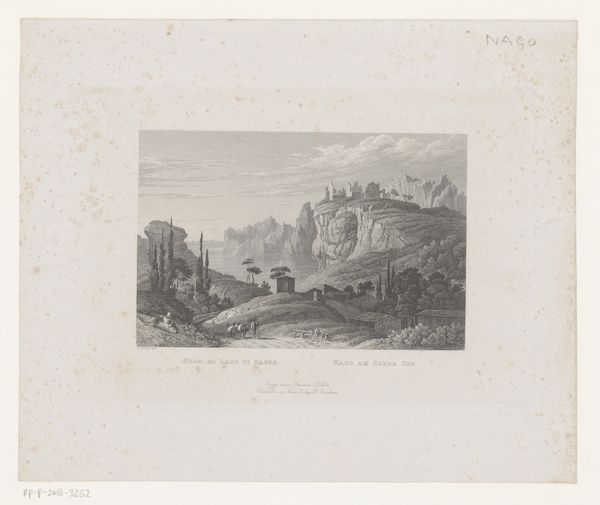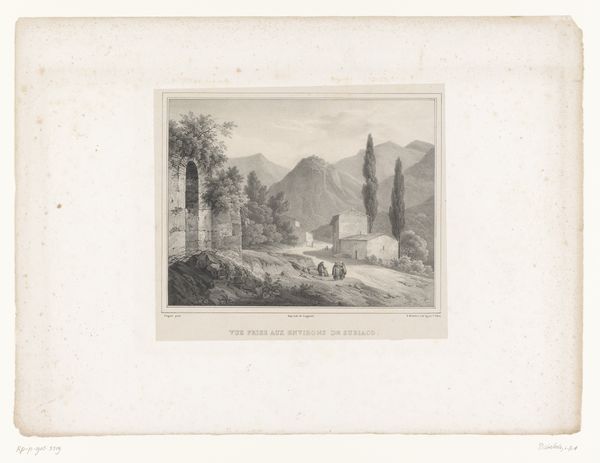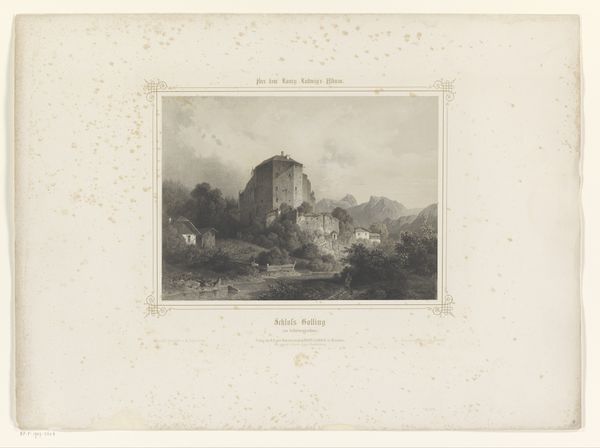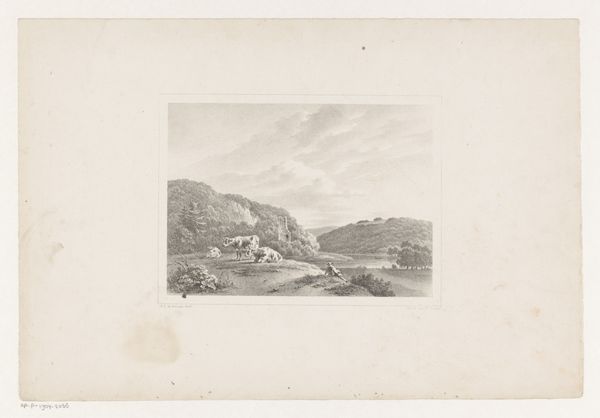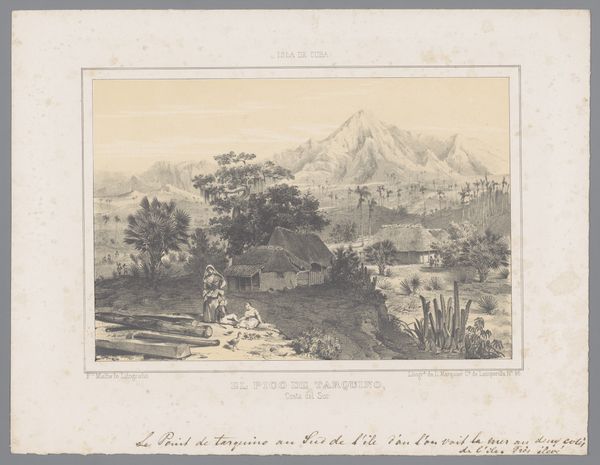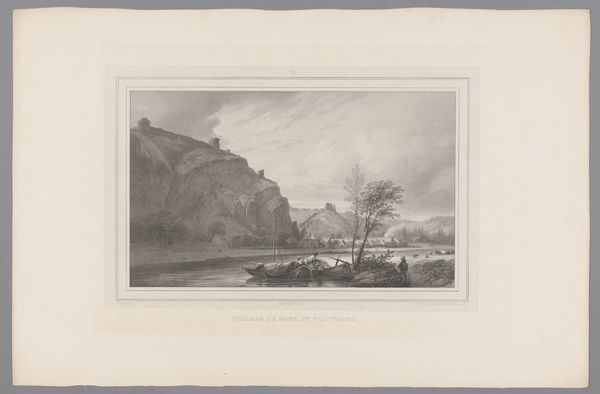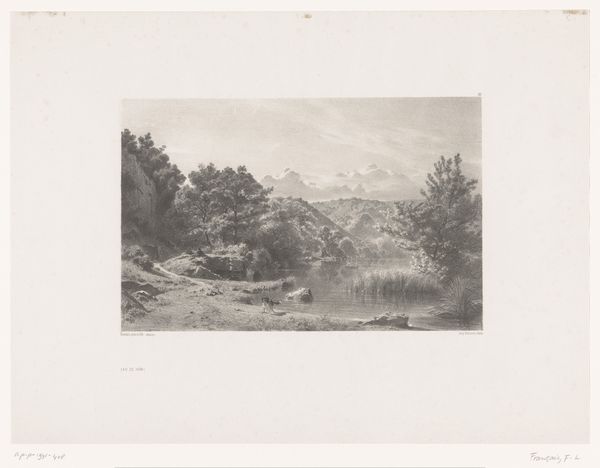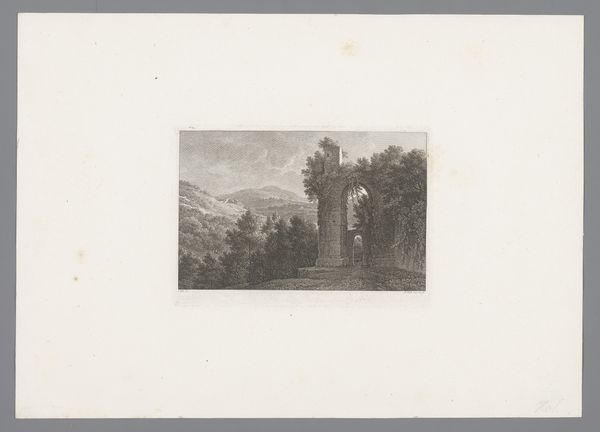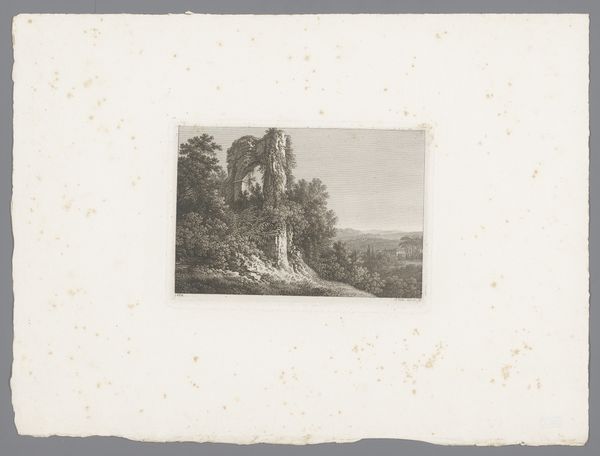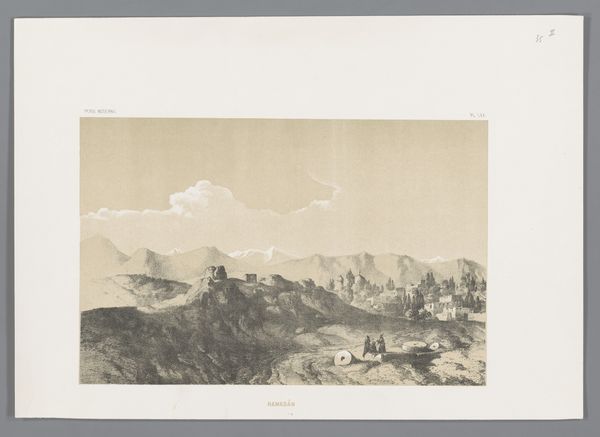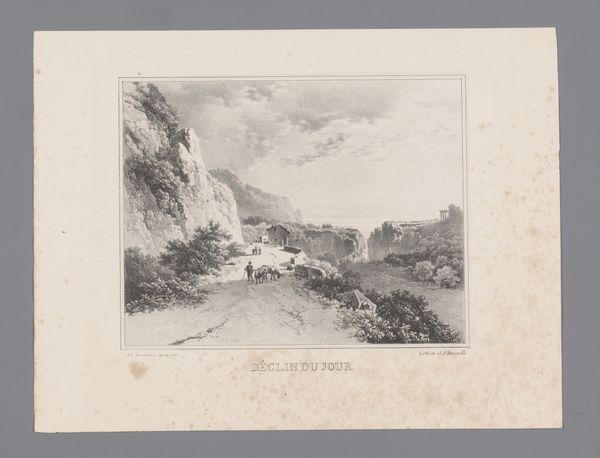
Dimensions: height 444 mm, width 570 mm
Copyright: Rijks Museum: Open Domain
Curator: Immediately, I see it as a dream clinging to a cliffside. All in faded sepia tones, as though memory itself made the sketch. Editor: That's an interesting reading, this "View of Heidelberg Castle," made in the 1850s by Ludwig Meixner using lithography and etching, brings to mind questions about accessibility and reproduction. Curator: Accessibility? Reproduction? To me, this isn’t about exact copies. I think it captures the emotional essence of Heidelberg – the drama of ruined grandeur softened by nostalgia. The way the light filters through the trees almost feels like grace. Editor: But the choice of lithography *and* etching says a lot about production capabilities then. Lithography allowed for a wider distribution compared to single artworks; layering it with etching enabled fine details on mass. Making such images were intended to familiarize a larger audience with this majestic ruin... potentially stoking travel or reinforcing local identity. It makes you consider where and who got to see it and what the impact on cultural representation was in Germany in those years. Curator: I do like how you consider production; however, it also captures the Romanticism perfectly, how landscape mirrors an emotional state. Look at how small the castle is set against the drama of the setting; our fleeting existence facing the permanence of nature. Editor: Well, permanence through reproducibility, at least! Each print, regardless of artistry, needed materials: stones for lithography, acid for etching, paper. How were those materials sourced? How was that labor organized? Romanticism aside, somebody ground the pigments and made the presses, and this piece helps ask who were they? And that, in turn, impacts whose visions and voices rise in a culture. Curator: I concede. Looking at it again, the technique lends a uniformity to the landscape. It wasn't just one unique vision. But the emotional impact, still so strong! The melancholy clinging to the stone! Editor: Yes, precisely! We now have a reproduction for hundreds to contemplate. The materials tell the story, too. Curator: Well, I suppose this dialogue showed we each perceive echoes – be they in stone or on the printing press. Editor: Exactly. Seeing what’s represented – and how that representation was physically made manifest – that’s where art history sings, or grinds, depending on who’s singing.
Comments
No comments
Be the first to comment and join the conversation on the ultimate creative platform.
